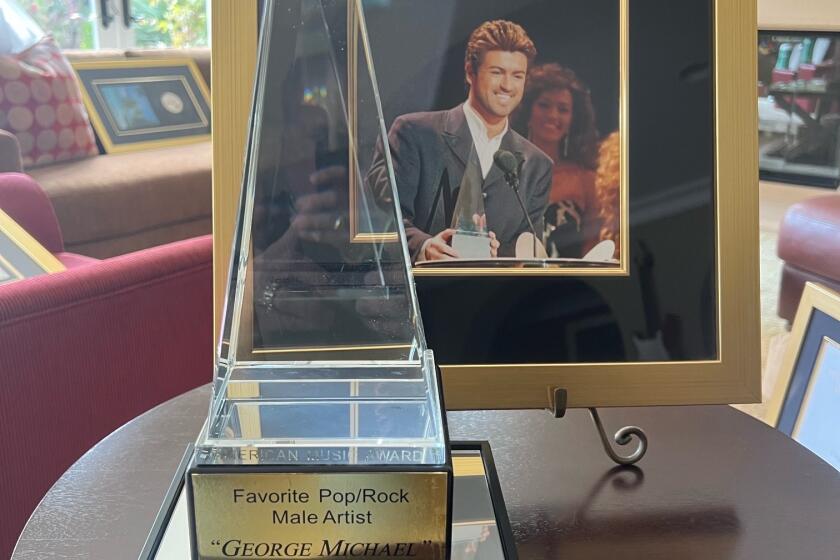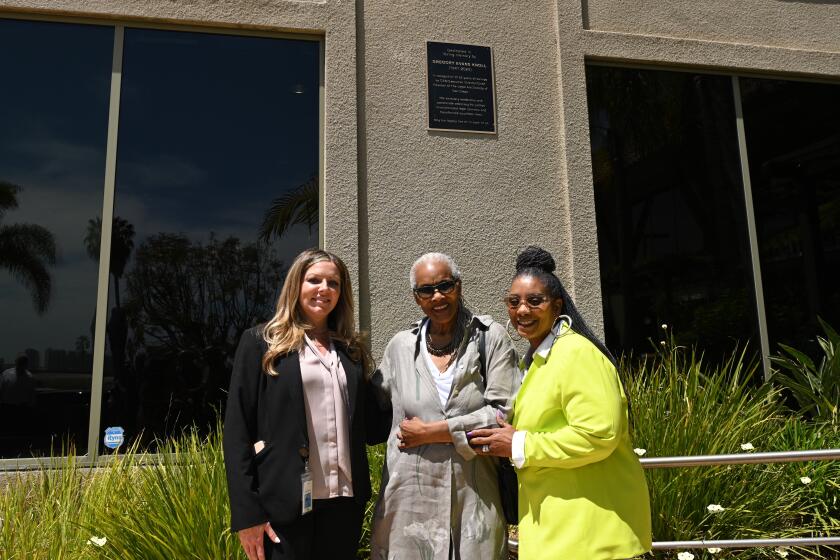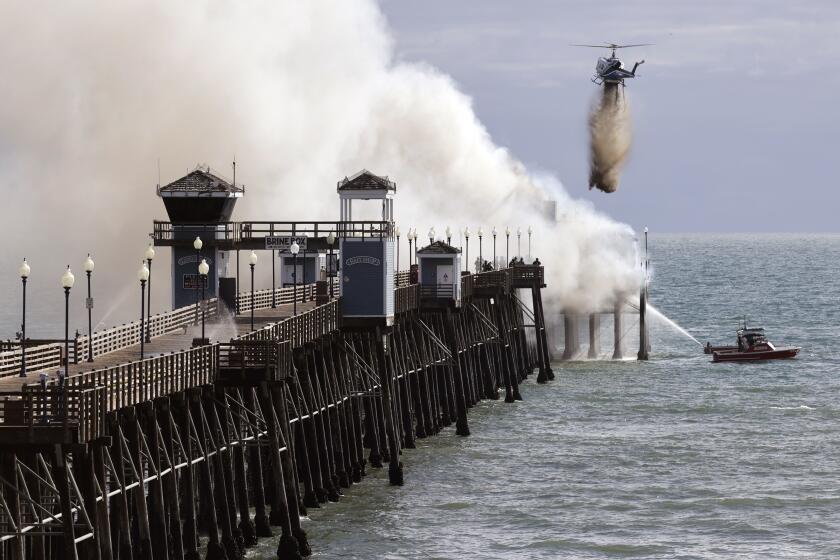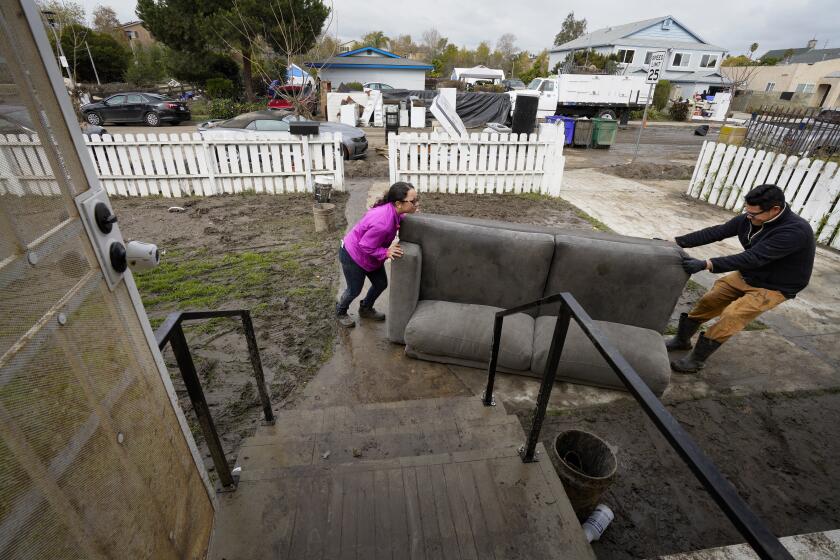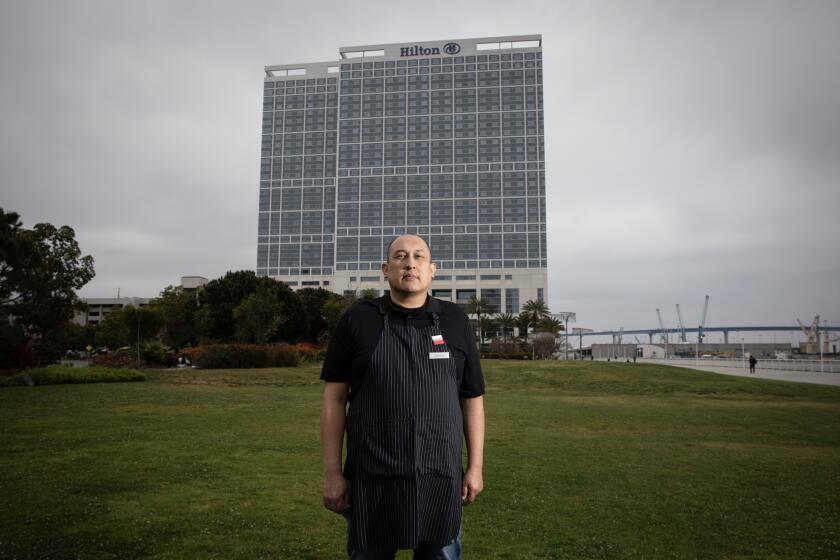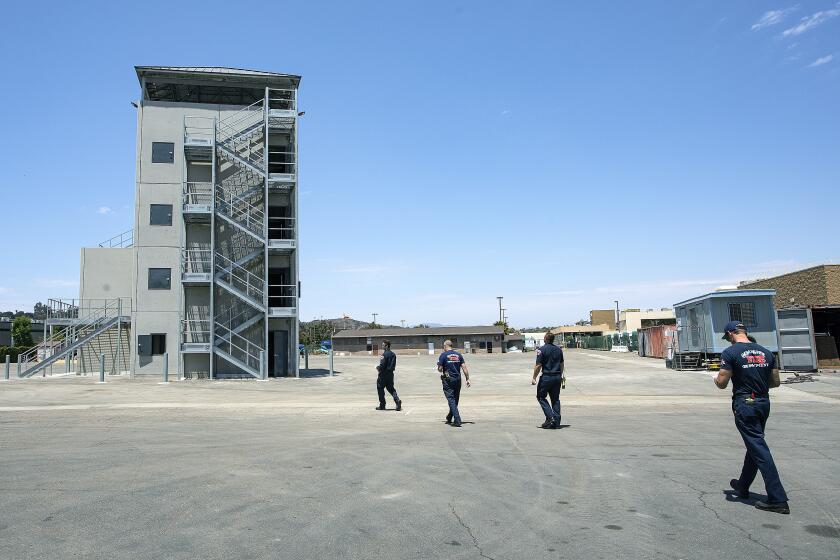Teen’s environmental documentary about Glen Canyon Dam controversy attracts national recognition
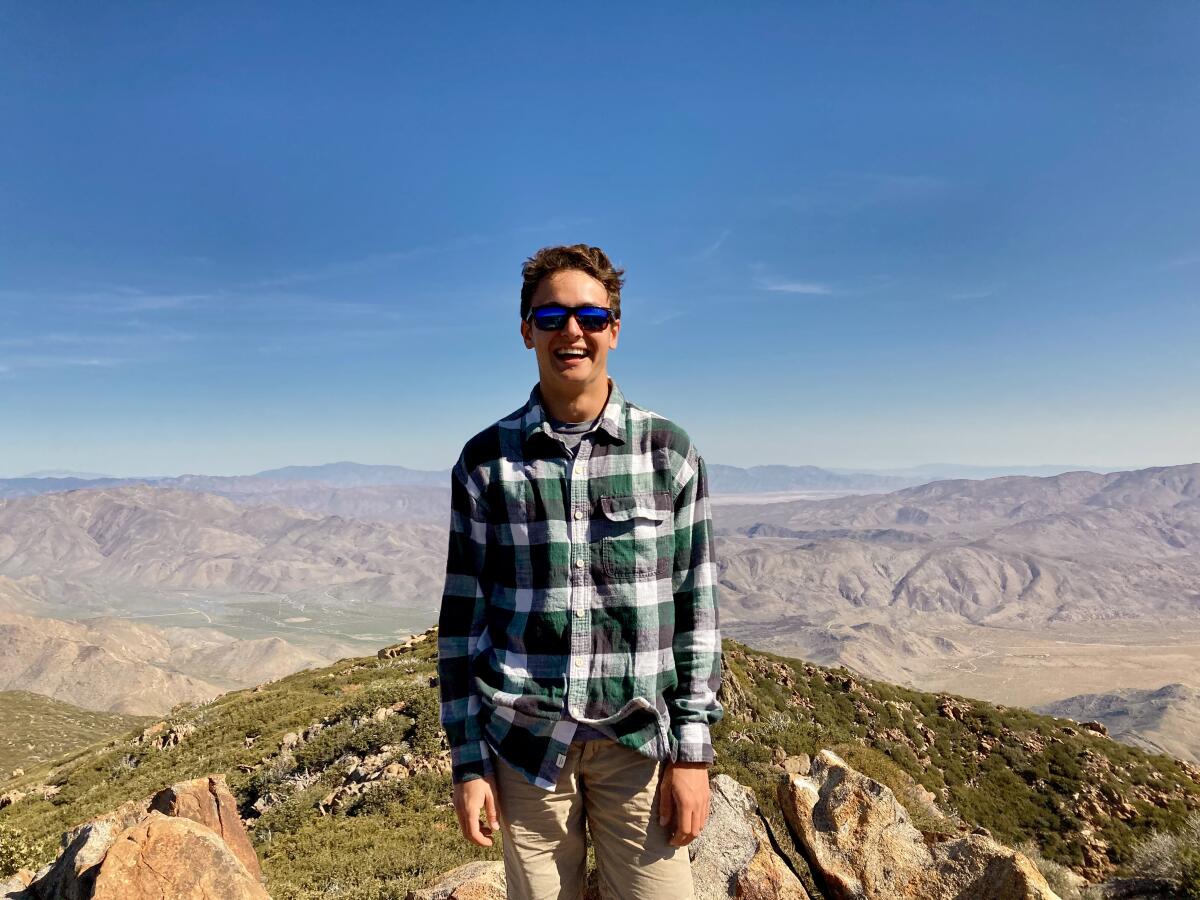
Shea McGrath was selected out of thousands of teens for top honors in a nationwide competition that recognized his work producing a history about the dam
San Diego teen Shea McGrath was selected out of thousands of teens for top honors in a nationwide competition that recognized his work producing a documentary about the controversial Glen Canyon Dam.
McGrath, 19, was among six winners from middle and high schools who won the Next Generation Angels Award, an annual prize sponsored by Washington, D.C.-based nonprofit The Better Angels Society, in partnership with National History Day , a program that fosters the study of history. National History Day gets roughly 400,000 entries for its annual contest, which includes a documentary film competition. Part of the prize is a meetup with renowned documentarian Ken Burns.
It was McGrath’s first major attempt at filmmaking. But the topic of water management in the Southwest was compelling and drove him deeper and deeper in his research over several months during his senior year in 2023 at Francis Parker School in San Diego. McGrath, whose family lives in San Carlos, is now in his second semester at Bowdoin College in Brunswick, Maine. He is interested in environmental studies, history and Spanish.
The 10-minute film delves into the history of the Glen Canyon Dam, which sits on the Colorado River in northern Arizona and fills the Lake Powell reservoir, a few hours’ drive from the Grand Canyon. The scenic lake draws boaters, swimmers and hikers to its blue waters, sandy beaches and red rock canyons. The dam has been controversial since it was built in the mid-1960s. Environmentalists argue that the dam no longer serves its original purpose to control flooding, and the lake should be drained.
McGrath’s film, “Glen Canyon: Frontiers Opened, Paradise Flooded,” looks at both sides of the controversy and includes rare footage of the area before the lake was created. The film includes historical interviews with dam supporters and opponents, including folks who lived nearby, and explains the significance of the lake to Native Americans who once lived there.
In his film synopsis, McGrath says the dam “represents three frontiers: new techniques in 20th-century water management, the beginning of a new environmental movement, and the unknown frontier of severe drought and climate change today.”
“As I hope to communicate with the film, 20th-century infrastructure, such as Glen Canyon Dam, must be re-examined in a changing climate where water is not as plentiful yet in higher demand, and in a time when we are reconsidering our species’ impact on the environment,” McGrath said.
“I hope the audience understands, too, that the radical environmental movement led by Edward Abbey in the 1960s is not the answer to today’s woes — because we must differentiate preservation and conservation, and listen to the voices of Indigenous people whose prior generations have sustainably relied on the river for upwards of ten thousand years,” McGrath said.
McGrath’s interest in Glen Canyon was sparked two summers ago, when he read “Cadillac Desert,” written in 1986 by environmentalist Marc Reisner.
“It was about the very tumultuous history of water as a very rare yet essential resource in our region. It made me realize how astoundingly complex our water system is — both physically in an engineering sense, yet also culturally and historically,” McGrath said.
The film was for National History Day, which is an academic contest (like a science fair for history). He competed at the San Diego County competition, then the California state competition, and finally the Nationals competition in Maryland, where he received the Better Angels award.
McGrath’s most rewarding hours on the project were spent digging up information, including videos from online databases and archives such as JSTOR and ProQuest. He described Northern Arizona University’s Cline Library Colorado Plateau Digital Collections as his “biggest goldmine.”
“I think one significant thing about his film as well as his past projects is the value that Shea puts into primary source materials, especially archival sources... I think his work is also significant due to the complexity of the issue itself — with Southern California becoming increasingly arid, the use of water is becoming an increasingly important topic for California and its neighbors,” said McGrath’s project adviser, Joseph Kurz, a Ph.D. in history and high school history teacher at Francis Parker. “Shea always finds a way to keep digging deeper. I use his works, his work habits, and his approach to sources as a model for my current students” Kurz said.
The hardest part was editing the film down to the 10-minute limit the competition required. McGrath had never taken a formal film class.
“I know that just 10 minutes of film alone cannot change a problem as large as water scarcity and harmfully outdated infrastructure, but I believe film is the most accessible way to communicate messages,” McGrath said.
His film advanced through state and national competitions and was evaluated by a panel of judges, including historians, educators and archivists, who looked at criteria such as historical significance, historical argument and clarity of presentation.
His film was screened at the fifth annual Student History Film Festival, themed Frontiers of History, at the Philadelphia Film Center late last year . It won second place among 100 high school finalists. The film will receive a copyright and will exist in perpetuity in the Library of Congress.
“The Next Generation Angels Awards are building the next generation of documentarians to bring our history to life,” said Katherine Malone-France, president and CEO of The Better Angels Society. “As they learn the rigorous process used by filmmakers like Ken Burns, these students are able to tell the stories of our shared past that are meaningful to them.”
McGrath joined five fellow award winners several weeks ago in a virtual discussion about filmmaking with Burns.
“One of the most poignant takeaways for me was Ken’s comparison of filmmaking to maple syrup. It takes 40 gallons of sap to produce 1 gallon of syrup — and Ken says filmmaking operates at the same ratio,” McGrath said.
Burns also emphasized the importance of place — depicting a historical location by showing it through the eyes of people who saw it in its time.
“A place cannot be separated from its people, and I tried to include as many voices (as possible) from those who had seen the pre-dam Glen Canyon,” McGrath said.
“Shea’s documentary about Glen Canyon represents many years of interest in writing and producing work that educates the community about environmental issues,” said Mary Ong-Dean, Francis Parker Social Studies teacher and seventh-grade dean.
McGrath’s deep interest in environmental issues comes from a love of nature. One of his favorite hiking spots is on top of Garnet Peak in the local Laguna Mountains.
“The sky above is so large and the mountains around you so vast that it makes you feel both insignificant and a part of the natural world at the same time — and that feeling is what I try to communicate at the end of the film,” McGrath said. “It’s critical to remember that no land can ever be separated from its human history and that every place can be even more fully appreciated through recognizing and appreciating the cultural value of the land to many generations of indigenous inhabitants.”
Here’s a link to the video:
Registration for the 2024 National History Day just opened. For information, visit nhdsd.org.
Get Essential San Diego, weekday mornings
Get top headlines from the Union-Tribune in your inbox weekday mornings, including top news, local, sports, business, entertainment and opinion.
You may occasionally receive promotional content from the San Diego Union-Tribune.




